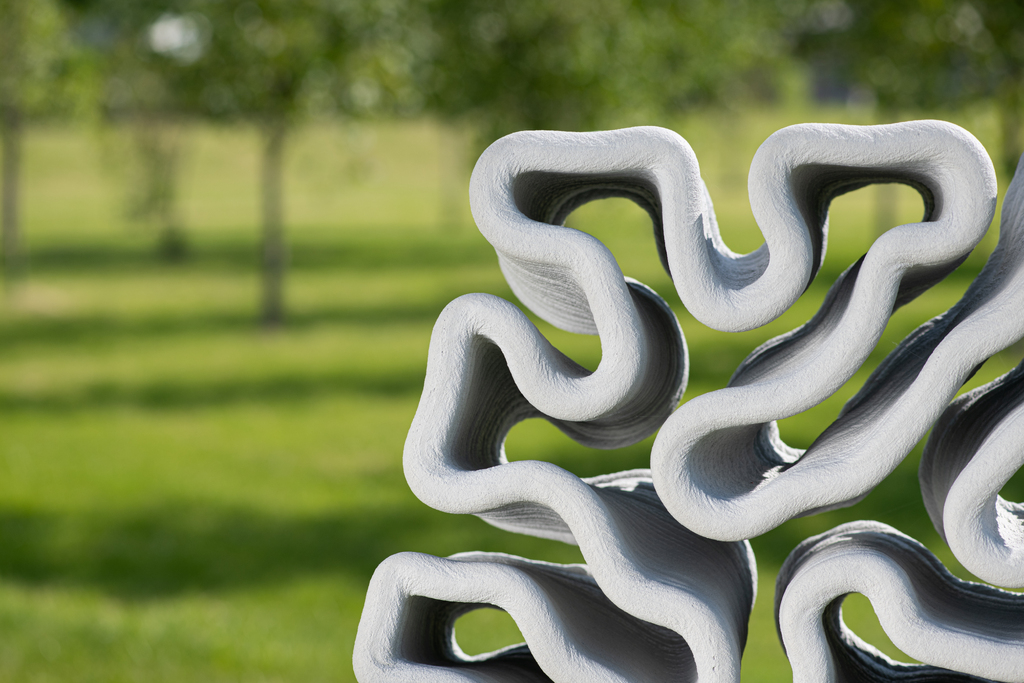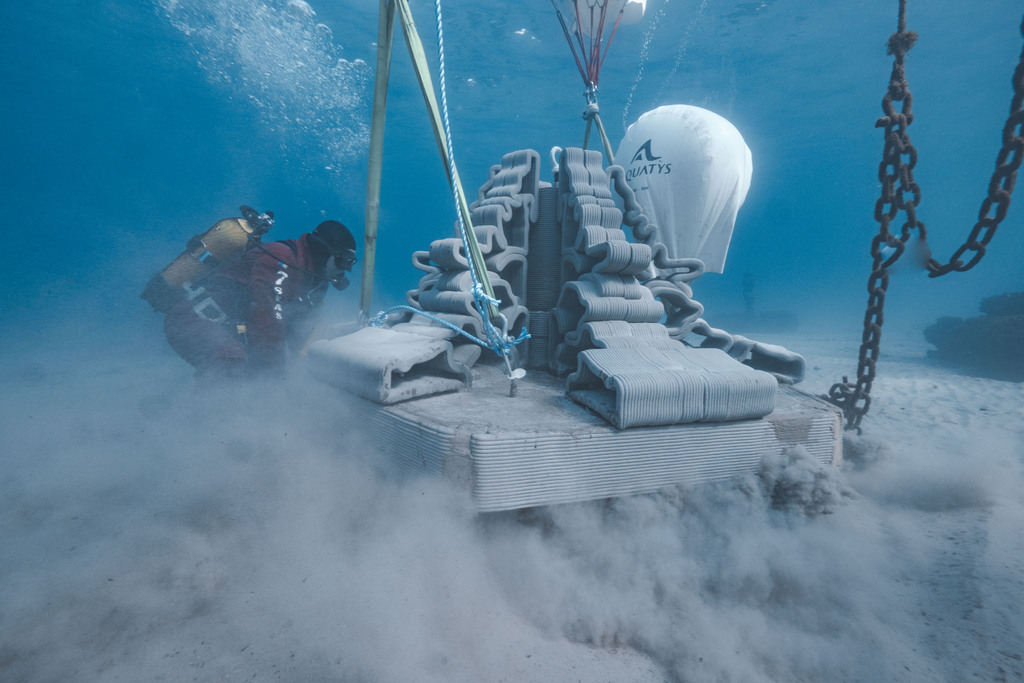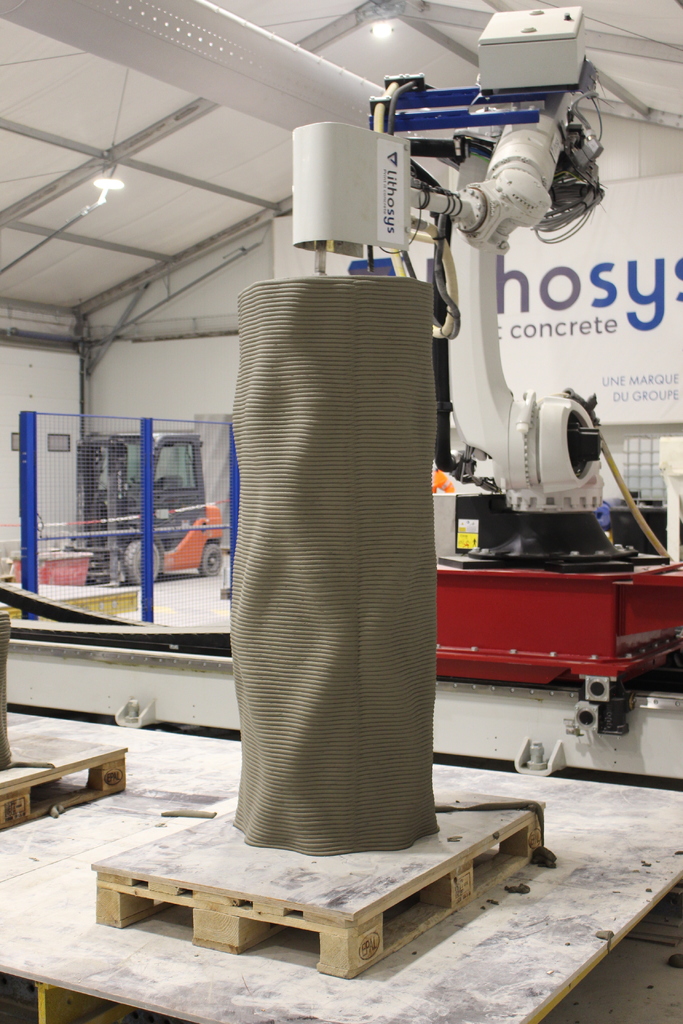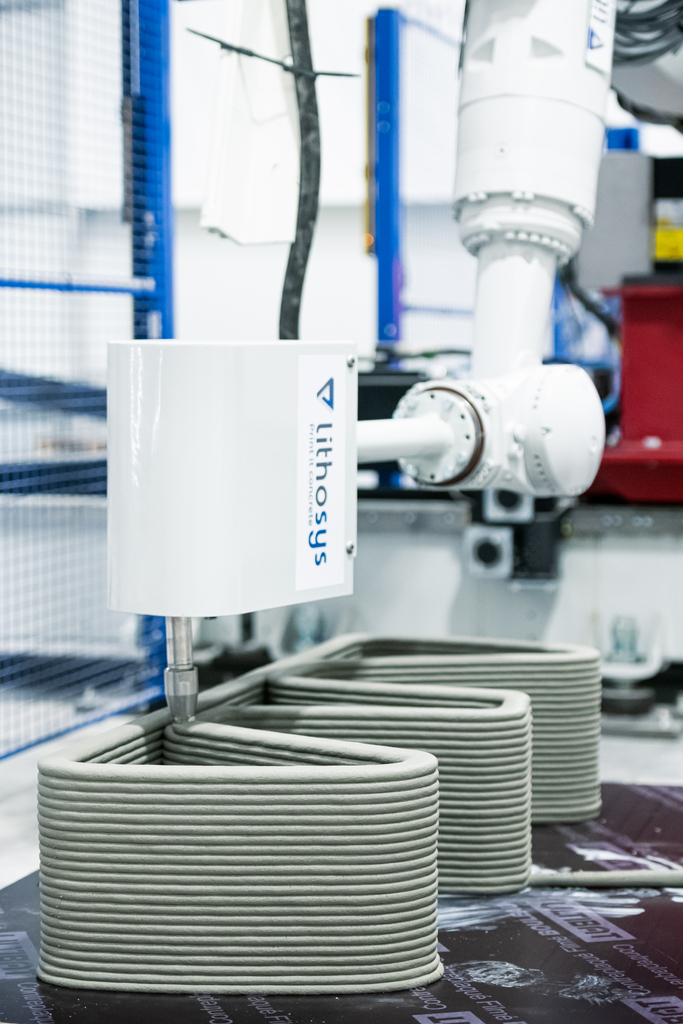Vicat, a French cement manufacturer, supplies materials (cement, concrete, aggregates), products and services for the construction industry. In 2022, the Group crossed the boundaries then existing between the separate realms of concrete design and construction with its launch of Lithosys, a brand dedicated to 3D printing. Being a comprehensively usable and tailor-made product, this innovation has been illustrating the family-owned company's capacity for new developments. With Lithosys, the Vicat Group aims at becoming a major player in concrete 3D printing both on the French and international markets by investing € 2 million in a newly established company unit dedicated to production and R&D. To support the unit in the continual enhancement of this innovative technology, Vicat has selected Quadra, the French equipment manufacturer for the concrete industry and an expert in automated processes, as partner.
3D printing for the construction industry
Thanks to its mastery of technical and scientific know-how, the Vicat group has developed the Lithosys system covering a multitude of applications including the ability to transgress the limitations resulting from the use of concrete materials. Vicat’s expertise covers the entire concrete 3D printing value chain.
Lithosys offers support tailored to each project:
designing objects to be manufactured by 3D printing: breaking down the desired shapes into successive layers of controlled widths and thicknesses, taking into account the limitations associated with this manufacturing process;
supplying printing materials: Lithomix, a range of printable materials specially designed to meet the requirements of additive manufacturing, guaranteeing optimum performance while reducing the carbon footprint;
developing concrete 3D printing technologies, prescription and supply of materials;
production of printed concrete elements: special pre-walls, manholes, street furniture, exterior decoration, biodiversity support, etc.
Benefits and applications of 3D concrete printing
Being a technology at the crossroads of the digital and ecological transitions, 3D concrete printing offers a number of advantages:
optimization of the concrete volume used;
reduced carbon footprint;
shorter construction times and reduced physical labour;
a business model favouring short production runs;
enhanced operator skills and greater attractiveness of construction trades;
improving safety and ergonomics on construction sites;
support for trade digitalization;
greater creative freedom.

“The fast progress of 3D concrete printing is opening up new horizons. Computer-aided design tools enable us to position the right concrete in the right place. Thanks to our expertise across the entire concrete 3D printing value chain, we can offer Lithosys tailor-made support to bring the most daring projects to life!” enthuses Olivier Martinage, Head of Concrete 3D Printing.
The scope of possibilities offered by 3D concrete printing has already opened up a wide range of markets, including construction (customized site elements, lost formwork, manholes), prefabrication (columns, staircases, facades, grids, concrete paving, masonry elements), biodiversity (artificial reefs, complex dead bodies, wave deflectors, floating wind and solar farms), urban and interior design (public amenities, designer furniture, art).
Focus on 3D concrete printing for underwater biodiversity
The freedom of form offered by concrete 3D printing enables biomimetic design of parts for underwater and terrestrial biodiversity, reproducing the roughness of elements found in nature. Thus, two years after its launch, the brand designed an “ecolest”, an eco-designed marine ballast structure in concrete for mooring buoys and ships. Incorporating up to 25% concrete 3D printing, ecolests are deadweight structures designed to limit the impact of traditional moorings near port areas on the development of underwater biodiversity, fauna and flora. Their pyramidal structure ensures a high level of stability, while the peripheral honeycomb modules produced by 3D concrete printing are fully adaptable to environment and species typologies.
Thanks to their adaptable bioinspired shapes, the ecolest approach offers an innovative technical and environmental solution, generating a high volume of available habitat for biodiversity and meeting the dimensioning recommendations for the implementation of this type of structure.

A unique production unit, 100% dedicated to 3D concrete printing
With Lithosys, Vicat is continuing its research and development in 3D printing tailored to the requirements of each concrete application. The Group has invested € 2 million in a production and R&D unit dedicated to concrete 3D printing, located at Chambéry in the French department of Savoie.
Vicat favours these innovative techniques that reinvent traditional construction methods, using new skills, particularly digital ones. 3D concrete printing is also a way of reducing production waste and associated costs. With this new brand, the Vicat Group aims at industrializing concrete 3D printing to become a major player in this technology in France and abroad. With this in mind, the Lithosys offering continues to develop, with the creation of a complete range of inks, including low-carbon and biosourced inks.

Quadra's robotized 3D printing solution
In short, 3D concrete printing, which has been slowly gaining ground over the last decade after being invented in the 1980s, is changing its dimensions. The technique consists in robotizing the manufacturing process: the articulated arm of a robot ejects material via a nozzle - known as ink by analogy with a printer - and gradually traces a line of material whose convolutions and stacking of layers have been programmed on computer generating the prior preparation of a digital model.
A pioneer in technological innovation, with its own design offices employing over 60 engineers and technicians, and an R&D unit, Quadra's innovations focus on the development of solutions for new construction systems, energy savings and ease of operation for automated lines.
As part of Vicat's Lithosys project, Quadra's expertise in robotics and automation enabled it to meet all the cement manufacturer's specifications by supplying the complete production line ranging from the concrete mixing and batching plant to the printing nozzle with rotary head.
As an example of its innovation and R&D policy, the 3D concrete printing solution designed and developed for the Vicat Group illustrates the French manufacturer's capacity for innovation. In addition to the benefits in terms of productivity and quality, the technical solution proposed by Quadra is characterized by its ease of implementation and its precision of material placement, enabling Vicat to meet its customers' high quality standards.
Quadra's man-machine interface provides a live display of printing parameters, with access to the same via clear and easily comprehensible didactic models. Quadra has 20 years' experience in robotics, and this project highlights its multi-disciplinary skills in integrating robotic solutions for cutting-edge applications.
With a growing number of projects, the launch of new concrete ranges and the deployment of production units, 3D concrete printing is a breakthrough technology mobilizing the construction and building materials industry. It reduces construction time and material consumption. It also offers the possibility of a far greater architectural creativity by facilitating the creation of curves. The technology is working and things are moving forward with projects in both the commercial and residential construction sectors.
With this project, Quadra has been reaffirming its position as a preferred partner for the design and development of innovative, tailor-made solutions. The company's ability to design coherent, scalable solutions, its meticulous upstream site preparation, the effective coordination of the teams involved in the project, the delivery of fully assembled and tested equipment in its workshops, the rigorous follow-up after equipment commissioning, and the quality of the training provided are all contributing to compliance with specifications and full customer satisfaction.
